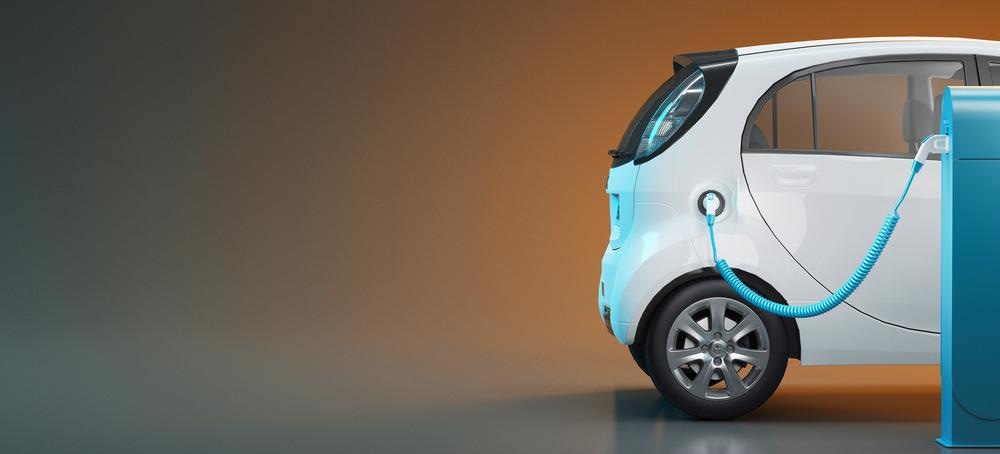Sakuu Corporation (previously known as Keracel Inc.) has recently revealed a milestone in additive manufacturing – an electric vehicle battery 3D printer that the company has designed and developed entirely in-house.

Image Credit: ALDECA studio/Shutterstock.com
New Additive Manufacturing Platform
The recent announcement reveals a successful internal design and development project to create industrial-scale battery production with the local manufacturing benefits of 3D printing.
The industrial-grade 3D printer platform has been designed with the e-mobility and electric vehicle battery markets in mind.
For the e-mobility markets specifically, we believe this to be a landmark achievement, and one that could transform consumer adoption of electric vehicles.”
Robert Bagheri, Founder and CEO of Sakuu
The breakthrough additive manufacturing technology is a multi-material, multi-process 3D printing system which can save 50% of materials costs while producing better-performing batteries.
The Sakuu system enables the high-volume production of customizable solid-state batteries (SSBs). Sakuu claims its electric vehicle battery 3D printer can achieve twice the energy capacity of alternatives.
The electric vehicle battery 3D printer developed by Sakuu is a world first. It blends powder bed and jetted material deposition methods to combine different materials and processes in one workflow.
This enables the system to 3D print multiple materials into a single layer. Ceramic, metal, and PoraLyte – Sakuu’s proprietary support material – can effectively be printed simultaneously in every layer.
This is the optimal method for 3D printing SSBs. But the advanced, multi-material, multi-process additive manufacturing technique that Sakuu has pioneered with this system can also be applied to other complex functional part production requirements.
This combines the advanced manufacturing capability of the electric vehicle battery 3D printer itself with the infinitely transferable nature of developments in additive manufacturing technology.
Now, manufacturers of complex, functional parts for solid-state systems such as batteries, computer processors, and sensors may be able to consider 3D printing approaches in the coming years.
This agility also makes the electric vehicle battery 3D printer compatible with existing systems and product cycles. Any shape can be printed and bodies and casing for existing battery designs are easily replicated. This is important for the automotive industry, where product life cycles can span decades.
Are SSBs Better than Lithium-Ion Batteries?
SSBs are typically around 33% lighter than equivalent lithium-ion battery counterparts. The technology is also capable of storing more energy in less space. SSBs with the same capacity are around half the size of lithium-ion batteries.
The weight and size benefits of SSBs are particularly significant in automotive applications. Reducing weight is the main design focus in electric vehicles, as it has a direct impact on the range – a key indicator of consumer preference.
The smaller form factor of SSBs is also desirable to manufacturers of electric vehicles, and especially of personal mobility devices such as scooters and motorized chairs.
Bagheri commented: “SSBs are a holy grail technology, but they are both very difficult and expensive to make. By harnessing the flexibility and efficiency-enhancing capabilities of our unique and scalable AM process, we’re enabling battery manufacturers and EV companies to overcome these fundamental pain points.”
What are the Benefits of Additive Manufacturing?
The general benefits and opportunities that industries can get from additive manufacturing certainly apply in the case of Sakuu’s electric vehicle battery 3D printer system.
Additive manufacturing uses fewer materials than subtractive methods by nature – approximately 30-50%. These materials can also be sourced locally, minimizing the costs – both environmental and financial – of production.
Additive manufacturing also allows for iterative design processes to take place with less friction. Engineers and designers can continually improve and test products, and manufacturers are not stuck with old technology due to costs associated with changing production.
A redesigned model – one with more optimized efficiency or more compatibility – can be printed on the same day on the very next print run after the last of the old designs has finished printing.
This flexibility is wrapped into wider product design as well. Electric vehicle and mobility device designers are currently limited by stock battery and battery housing sizes available.
With 3D printing, batteries can be designed alongside the rest of the product, with aesthetic, functional, and aerodynamic factors given top consideration.
More than Just an Electric Vehicle Battery 3D Printer: Sakuu’s Breakthrough for Additive Manufacturing
Combining these benefits with the advanced manufacturing capability to produce fully customizable SSBs for electric vehicles, Sakuu has achieved a milestone in the development of additive manufacturing technology.
Bagheri concluded: “As a cheaper, faster, local, customisable and more sustainable method of producing SSBs – which as a product deliver much higher performance attributes than currently available alternatives – the potential of our new platform offers tremendous opportunities to users within energy, as well as a multitude of other markets.”
References and Further Reading
Lyu, Zhiyang et al. (2021). “Design and Manufacture of 3D-Printed Batteries.” Joule. [Online] https://doi.org/10.1016/j.joule.2020.11.010.
Pederson, David (2021). “Sakuu Poised to Unlock Mainstream Adoption of Electric Vehicles with World’s First EV Battery 3D Printer.” PRWeb [Online] https://www.prweb.com/releases/sakuu_poised
Disclaimer: The views expressed here are those of the author expressed in their private capacity and do not necessarily represent the views of AZoM.com Limited T/A AZoNetwork the owner and operator of this website. This disclaimer forms part of the Terms and conditions of use of this website.